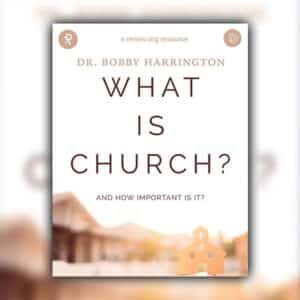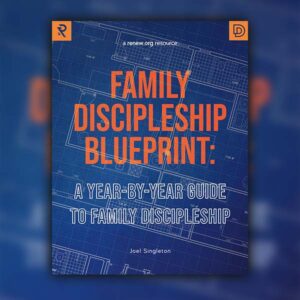A Disciplemaking Pathway Is Not a Greatest Hits Collection

It’s Sunday morning. You’ve just moved into a new community and you’re “church shopping.” Before visiting the next church, you check out its website. The website reads like a greatest hits collection of activities and programs. You’re overwhelmed by all the opportunities.
Disciplemaking pathways sometimes resemble a greatest hits collection. We pull together all the best things that work for us or other churches into a ragtag program. This haphazard collection of activities in our churches gives an appearance of growth but in reality, busyness does not always equal spiritual growth.
In their book Simple Church, authors Thom Rainer and Eric Geiger document how research indicates that less is more. “Churches with a simple process for reaching and maturing people are expanding the kingdom. . . . Churches without a process or with a complicated process for making disciples are floundering.”
Churches need a simple pathway for growth—a process that helps people become mature in Christ, live on mission for Christ, and multiply their lives in Christ. A disciplemakine pathway is more a collection of activities.
Pathways and Roads
A pathway is different from a road. Roads are marked by the most direct route between two points. Obstacles or diversions are blasted out of the way to create efficiency and speed in reaching a destination. Roads are designed to accommodate heavy traffic with lots of vehicles crowding for space. Pathways are different.
Pathways are slower and often unpredictable. They swerve around rocks and trees, taking into account the landscape. Pathways have a destination. We choose a path to go somewhere.
Pathways have markers to indicate where we are on the journey. The markers may be part of the landscape (the large oak tree at the fork of the road) or man-made. Markers help us assess where we are and point the way to the journey’s end.
Many types of people can join the pathway’s trail. Some are beginners and take it slow. Leading the way are the skilled hikers who know the path and can lead others. Friends always enrich the walk.
Our discipleship journeys are more like pathways than roads. In our journeys with the Lord, we swerve and meander, dealing with life’s challenges. Our growth pathways aren’t crowded highways with multiple programs competing for space and primacy. In fact, the most effective disciplemaking pathways have a few components–such as faith, hope, and love–that lovingly and patiently move us forward.
A disciplemaking pathway invites people to encounter the living Christ. In a pathway, we partner with the Holy Spirit to wisely and intentionally weave together learning experiences and relationships to progressively move people towards maturity in Christ, to live on mission for Christ, and to multiply their lives in Christ. A pathway provides what we need to know, be, and do to wholeheartedly follow Jesus. A pathway is a servant, partnering with the Holy Spirit to create life change (1 Corinthians 3:5).
Disciplemaking Pathways
What are the marks of an effective disciplemaking pathway? A disciplemaking pathway invites everyone to join the trail. Some are beginners (spiritual infants), others have some experience (growing believers), and some are skilled walkers (disciplemakers) who help others. Pathways take into account the spiritual maturity of people as they journey with Jesus (1 Peter 2:2).
A disciplemaking pathway is intentional and not haphazard. Like Jesus with His disciples, pathways invite us to a process, a relationship, and a destination (Matthew 4:19; Mark 3:13-14). The Apostle Paul also embraced intentionality. He not only taught the same doctrine from church to church (1 Cor 4:17) but he also encouraged similar application from church to church (Ephesians 5:22-32/Colossians 3:18-25). The New Testament is very clear that what a disciple should know, be, and do should not be left to chance.
Growth markers dot a pathway. These markers move people towards spiritual maturity, mission, and multiplication. Each marker challenges people to a new level of commitment and contribution. A pathway gives direction so that people understand where they are on the journey and what is ahead.
Relationships are pathway essentials. With the Holy Spirit as our guide, we join others on the disciplemaking trail. Whether it’s with a spiritual mother or father, disciplemaker, or friend, pathways embody the principle that “two are better than one” (Ecclesiastes 4:9).
Finally, a disciplemaking pathway is an invitation to adventure. The destination is clear but we’re not sure what we may encounter in life’s walk with our Lord. A pathway gives us the motivation and resources to turn life’s challenges into redemptive moments as we live as Jesus’s disciples (2 Corinthians 4:17-18).
In our churches, people deserve something more than a haphazard, scattershot approach to their growth in Christ. A pathway provides intentional and relational help and training for wherever people are on the spectrum of growth and moves them to the next level of commitment. Pathways invite people to encounter the living Christ who wants His disciples to be mature, to live on mission, and to multiply their lives for Him.
This post originally appeared at A Disciplemaking Pathway Is Not a Greatest Hits Collection – Navigators Church Ministries
If you have enjoyed reading this, please consider joining our email list!











